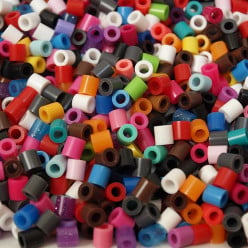Is it okay to take photos of my book covers or pictures in my books?
Is it against copyright laws to take a photo of the cover or pictures inside my books to use in my hubs? or photos of portraits/paintings from unknown artists I have on my wall?
If you don't know who created the image, or you know but can't get permission, it's best to stay away from using. The creators of the works automatically own the copyright to their works. One exception could be works that are definitely in the public domain, such as works created as work for hire by the government, but even then you need to be darn sure that that's the case.
Even with classic works - such as a photo of a really old painting - the photographer may own the copyright to that image.
One thing you could do is take pictures of original paintings - truly old, like a hundred years old - and use those. Artwork that old is definitely in the public domain. Even then, if it's at a museum, check with the museum; it may control copyright on images taken of their artwork. If in doubt, ask!
Yes, it is against copyright laws to use images that you do not have permission to use, especially on a site like this where you can possibly earn a few pennies with the help of said images. That said, there is little benefit for the copyright holder to pursue damages which is why theft of images is so prevailant online. You must check the copyright even if you want to do a derivative of the image.
What if you took a photo of three pictures. I took a photo of 4 baseball cards. I am sure that Topps has the rights to the pictures, but they are my possessions. How does the rule work in that instance. Another example would be taking a picture of a painting in your living room. How far does copywrite go?
The general rule in graphic design is you need to "change" at least 25% of the image to avoid copyright issues. This is is usually done by cropping or adding titles, etc. I'm not sure it would completely apply to what you guys are asking about, but it does seem like you could take pictures of your own baseball cards. Sorry if that example seems a little off topic, but thought it related at least a little.
Thanks Danielle, I am going to start school for Graphic Design on Monday so your example was perfect. I can't wait to start learning all the rules and regulations along with how to change my photos or make some on my own. One of the main reasons I chose Graphic Design is because I have such a hard time with using photos from other sites and not knowing all the laws. I will finally have professors to teach me those things.
I'm not sure taking photos of baseball cards is a good idea; you may own the photo, but not necessarily the right to reproduce the photo. Err on the safe side. Think of videos or DVDs; you can buy a copy of a movie, but not run it off and sell the copies you've made. The ability to reproduce a work rests with the creator. Even changing 25 percent of an image can get you in trouble if the person who created the image catches you. I don't think "Fair Use' would include using 75 percent of a work; that's a big percentage of the original work.
You wouldn't want to write an article and have someone lift 75 percent of it and use it without your permission.I was referring to using stock photos in graphic design, which to be fair I wasn't completely clear about. Not stealing a design.
But, snarky comments are the perfect way to facilitate meaningful online communications, so thanks for that!What snarky comments? I'm trying to answer someone's question as best I can, based on my ten-plus years as an editor. People can get into serious trouble using someone else's work without permission. I can't emphasize enough how important it is to avoid unauthorized use of images or other creative works.
I think the only place people get away with such things, (and that's not saying it's truly legal, but they might tend to look the other way), would be on sales sites, such as e-Bay, where you might take a photo of your collection of baseball cards, or scan the cover of a DVD, to illustrate what you are selling.
That, too, I'm sure is a gray area, but I would not do it for an article, unless you have written permission from the copyright owner.
The same goes for music. For example, back in the 1990's, I hosted a cable-access TV show about hobbies. There was a local group whose music I liked, and I requested permission to use one of their tunes as my theme for the show. Permission was granted. But that doesn't mean I can turn around an use that music to accompany a slideshow in an article here. That was a limited permission for that specific purpose, not a blanket "okay" to use it whenever and wherever I wanted.
And, I also had to be sure that in the credit roll for each and every show, the name of the song, the group, and "used by permission" was entered.
I know that example is a bit off-topic for use of images, but many of the same rules apply.I think you can use them. Its your photo of a book cover. You are not using it to make money on it, it may even come under Fair Use. Once you take the photo, on hubpages you can claim it as your own.
You are, however, wrong.
Copyright means the right to copy a work. If you are not the copyright holder, you do not have the legal right to copy it -- whether that is through a photo, a xerox machine, or uploading the image to your website and making it available to the whole web.
Fair Use and copyright are very specific, and you can be hit up for thousands of dollars in reparations if you are infringing someone's copyright and they catch you at it.
For a really good primer on copyright and fair use, I highly recommend Stanford law school's guide on both these issues -- even graphic artists are less likely to know copyright law than lawyers and librarians --
http://fairuse.stanford.edu/Copyright_a … index.html
By the way, there is nothing in copyright law which says, "If you're not making money on it, you can use it." By posting an image online, you're diminishing the commercial value of the image by offering it for free. Plus, on Hubpages, we ARE making money, and image search is one way people find our pages, so, in fact, we're making some money through images on our pages.Thanks for sharing that link. I will definitely be referring to that when I need additional answers to my copyright questions in the future.
Splitting hairs, you are not selling the picture but your product. It is a derivative usage.
"Even if a work is found to be an unauthorized derivative work, an alleged infringer can escape liability via the defense of fair use. For example, in Campbell v. Acuff-Rose Music, Inc., the Supreme Court found that although a parody of the song "Oh, Pretty Woman" by 2 Live Crew was an unauthorized derivative work, fair use was still available as a complete defense. This case marked the Supreme Court's pointing to transformativeness as a major clue to application of the fair use defense to derivative works."
"A crucial factor in current legal analysis of derivative works is transformativeness, largely as a result of the Supreme Court's 1994 decision in Campbell v. Acuff-Rose Music, Inc. The Court's opinion emphasized the importance of transformativeness in its fair use analysis of the parody of "Oh, Pretty Woman" involved in the Campbell case. In parody, as the Court explained, the transformativeness is the new insight that readers, listeners, or viewers gain from the parodic treatment of the original work. As the Court pointed out, the words of the parody "derisively demonstrat[e] how bland and banal the Orbison [Pretty Woman] song" is."
"Transformative uses may include criticizing the quoted work, exposing the character of the original author, proving a fact, or summarizing an idea argued in the original in order to defend or rebut it. They also may include parody, symbolism, aesthetic declarations, and innumerable other uses."
Related Discussions
- 12
How to avoid copywrite infringement when obtaining pictures and videos for my hu
by Justin Aptaker 13 years ago
How to avoid copywrite infringement when obtaining pictures and videos for my hubs? Consequences?This question has several parts. I'm worried about the copywrite issues involved with pictures and videos that I obtain on the web. How do I know if an image that I find on Google images is copywrited?...
- 69
where does everyone get there photos from and how to avoid copyright??
by markbennis 13 years ago
Hello all, this might seem a stupid one but I still haven't figured it out yet. What is the score with applying photos to your hub, I mean can you just scroll the web and copy any photo you like?? I'm confused.... I understand the video aspect and that's cool embedded Url?? well...
- 33
Using old photographs in historical hubs
by ruthwalker 10 years ago
Hi there, joined HP a little while ago but only just got round to writing my first hub. It is going to be an historical piece but seem to be spending most of my time trying to find who owns copyright to the images I would like to use, which are all dated between 1920's and 1950's, and then trying...
- 48
I have a question about using copyrighted images
by NotPC 9 years ago
HubPages is very firm in their rule to only use photos for which you have permission to use. Hypothetically, what happens if you break this rule? I've seen many people using images that are clearly not theirs to use and I was just wondering if this affects them in any way...
- 73
Being charged for using an image without permission!!!? Help
by Lee 6 years ago
I have not used hubpages for around a year and have recently started to get back into it, I must admit that in the beginning I was a little Naive and posted images into my hubs willy nilly without thought of where they came from. I have recently recieved an email from a photo place saying that I...
- 20
can ı use a picture obtained from google image search at my hub?
by ofmelancholy 14 years ago
Picture covers bon jovi by the way.













